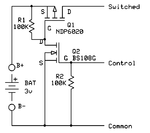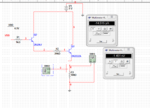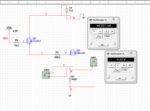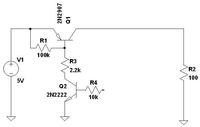Linspire
Full Member level 5
Guys,
I'm trying to implement power saving mode for my embedded circuit design.
There are several external hardware which will be running together with microcontroller.
1.RFID reader
2.LCD
3.SD card
4.MAX-232
I have tried built IR610MOSFET N-type circuit to turn on/off for external hardware when PIC's in sleep mode by sent a signal high to the MOSFET's GATE.
However, this mosfet required high voltage to turn on the circuit.
My overall external circuit can be work within 4.2V.
I have measure the high signal voltage from PIC's pin is around 4.6V.
I have tried to built with two BJTs, however there isnt sufficient voltage for the load (external hardware).
So anyone has this kind experience ?
Regards
Linspire
I'm trying to implement power saving mode for my embedded circuit design.
There are several external hardware which will be running together with microcontroller.
1.RFID reader
2.LCD
3.SD card
4.MAX-232
I have tried built IR610MOSFET N-type circuit to turn on/off for external hardware when PIC's in sleep mode by sent a signal high to the MOSFET's GATE.
However, this mosfet required high voltage to turn on the circuit.
My overall external circuit can be work within 4.2V.
I have measure the high signal voltage from PIC's pin is around 4.6V.
I have tried to built with two BJTs, however there isnt sufficient voltage for the load (external hardware).
So anyone has this kind experience ?
Regards
Linspire




